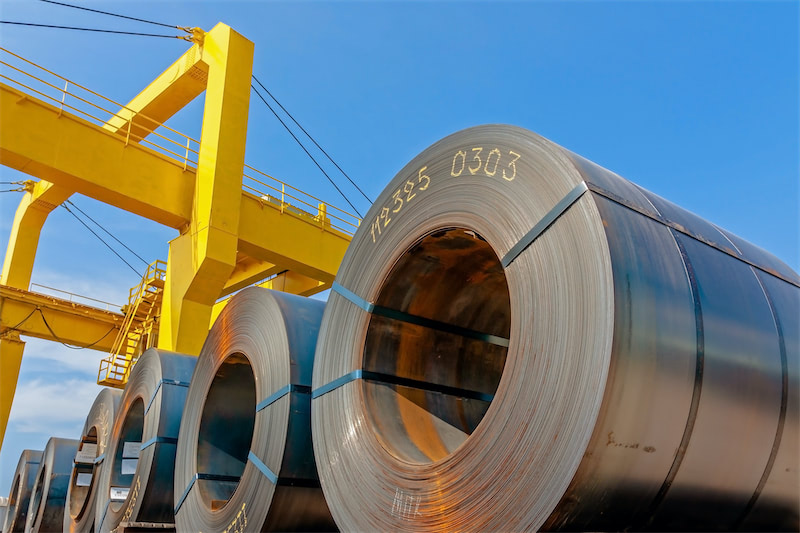






Since last year, the global NEV market has seen an explosive demand for LFP batteries, with many multinational automakers and domestic and overseas battery producers intensively signing long-term agreements, most of which are set to commence supply this year and next.
Just last month, Ford signed a five-year supply agreement with CATL, securing stable LFP battery supply from 2026 to 2030, including the Shenxing fast-charging battery, which will be applied to new car models starting in 2026. Previously, Renault signed LFP battery orders with LG Energy Solution and CATL, with a procurement volume of 39 GWh from 2025 to 2030, sufficient to meet the needs of 590,000 EVs.
Battery producers are also increasing their procurement of LFP materials. CATL has secured LFP orders from Fulin Precision Machining, with its subsidiary Jiangxi Shenghua set to supply at least 140,000 mt annually to CATL from 2025 to 2027. LG Energy Solution signed a revised agreement with Changzhou Liyuan, a subsidiary of Lopal, increasing its LFP material procurement from 160,000 mt to 260,000 mt by 2028.
With technological advancements and market expansion, the demand for LFP is expected to continue growing. Industry analysis indicates that the demand for fast-charging power batteries is significantly increasing, driving the rapid iteration of LFP materials. High-performance LFP products with high compaction density and high C-rate are emerging, further boosting market demand. Meanwhile, Chinese LFP producers are accelerating their global layout, expanding overseas market share, and further driving market demand growth.
Market share is continuously expanding
In China, the world's largest NEV market, LFP batteries are solidifying their dominant position. Industry data shows that in February this year, China's power battery installations reached 34.9 GWh, up 94.1% YoY. Among them, ternary battery installations were 6.4 GWh, down 7.2% YoY, accounting for only 18.5% of installations; LFP battery installations were 28.4 GWh, up 158% YoY, accounting for 81.5% of installations, a record high.
LFP batteries are not only shining in the Chinese market. In recent years, more overseas automakers have started choosing LFP batteries. Tesla, Volkswagen, BMW, Mercedes-Benz, Renault, Stellantis, General Motors, Hyundai, and others have either planned or already adopted LFP batteries in their car models. According to industry estimates, by 2030, the total demand for power and ESS batteries in Europe will reach 1,500 GWh, with about half, or 750 GWh, adopting the LFP route.
Compared to ternary materials, LFP offers higher safety, better economics, and longer lifespan. Industry insiders point out that LFP batteries have relatively lower costs, effectively reducing the production costs of NEVs, making EVs more price-competitive, and thus driving market demand growth. Additionally, LFP batteries have excellent thermal stability and safety performance, enhancing consumer confidence in EV safety.
"Considering factors such as economics, safety, and material controllability, LFP batteries will remain the mainstream choice in the market for the next 15 years," said Lian Yubo, Executive Vice President of BYD Group.
According to industry forecasts, by 2030, global demand for power batteries will exceed 3,500 GWh, and demand for ESS batteries will reach 1,200 GWh. In the power battery sector, LFP batteries are expected to account for 45% of the market share, with demand exceeding 1,500 GWh. In the ESS sector, LFP batteries will account for over 85% of the market share, with demand exceeding 1,000 GWh. The annual demand for LFP materials is expected to reach 10 million mt by 2030.
Facing the enormous market demand, many Chinese producers are ramping up capacity expansion, especially in overseas markets. For example, CATL, the power battery producer with the most overseas automaker clients, plans to jointly build an LFP power battery factory with General Motors in North America, with an expected capacity of over 35 GWh. Its collaboration with Stellantis will invest 4 billion euros (approximately 30.6 billion yuan) to build a 50 GWh LFP battery factory in Spain, set to start production in 2026.
Additionally, EVE, holding hundreds of GWh in battery orders, has started construction on its ACT battery project in Mississippi, with a planned annual capacity of about 21 GWh of prismatic LFP batteries, expected to start shipments in 2026. AESC's LFP battery factory in Spain has also commenced construction, with production expected to start in 2026.
On the material side, Dynanonic has reached an agreement with Amsterdam Fertilizer to build an LFP battery material factory in Spain. Lopal, together with the Indonesia Investment Authority, plans to build an LFP material factory in Indonesia with an annual capacity of 120,000 mt. Wanrun New Energy is building an LFP production factory in South Carolina, USA, with a planned annual capacity of 50,000 mt. Hunan Yuneng plans to invest in a 50,000 mt LFP project in Spain.
Many companies are also strengthening their new technology layouts. Hunan Yuneng stated that its high compaction density products are highly competitive, and it is one of the few producers in the industry capable of mass-producing high compaction density products. The company is currently developing its fifth-generation LFP product. Anda Technology also mentioned that its new generation of LFP products is steadily entering mass production, with shipments and market share gradually increasing.
According to Dynanonic, its liquid-phase technology can produce high compaction density LFP products, with new high compaction density products for NEVs already in mass production, and ultra-high compaction density products progressing smoothly in verification. Fulin Precision Machining stated that its high compaction density LFP products have gained recognition from core clients and leading automakers.
From being overshadowed by ternary batteries to a strong comeback, LFP batteries with continuously improving technical performance have "reversed their fate," and their share in global EV installations will continue to rise. The LFP battery technology route is accelerating globalization, and Chinese companies' influence in the global supply chain is significantly strengthening.
Notice: This news is sourced from https://www.163.com/dy/article/JRE81J7R0553XZF1.html?spss=dy_author and translated by SMM into English. The Chinese content of the news (including the pictures and videos if any) is uploaded and posted by a user of NetEase Hao, which is a social media platform and only provides information storage services.
For queries, please contact Lemon Zhao at lemonzhao@smm.cn
For more information on how to access our research reports, please email service.en@smm.cn

